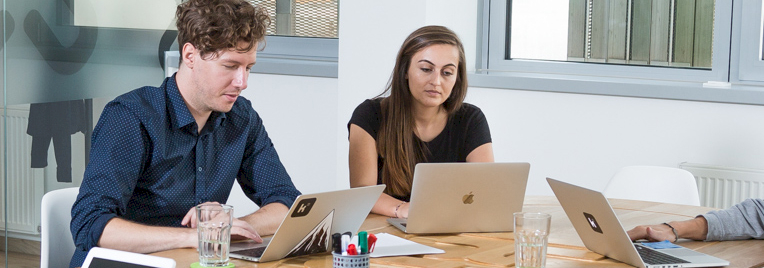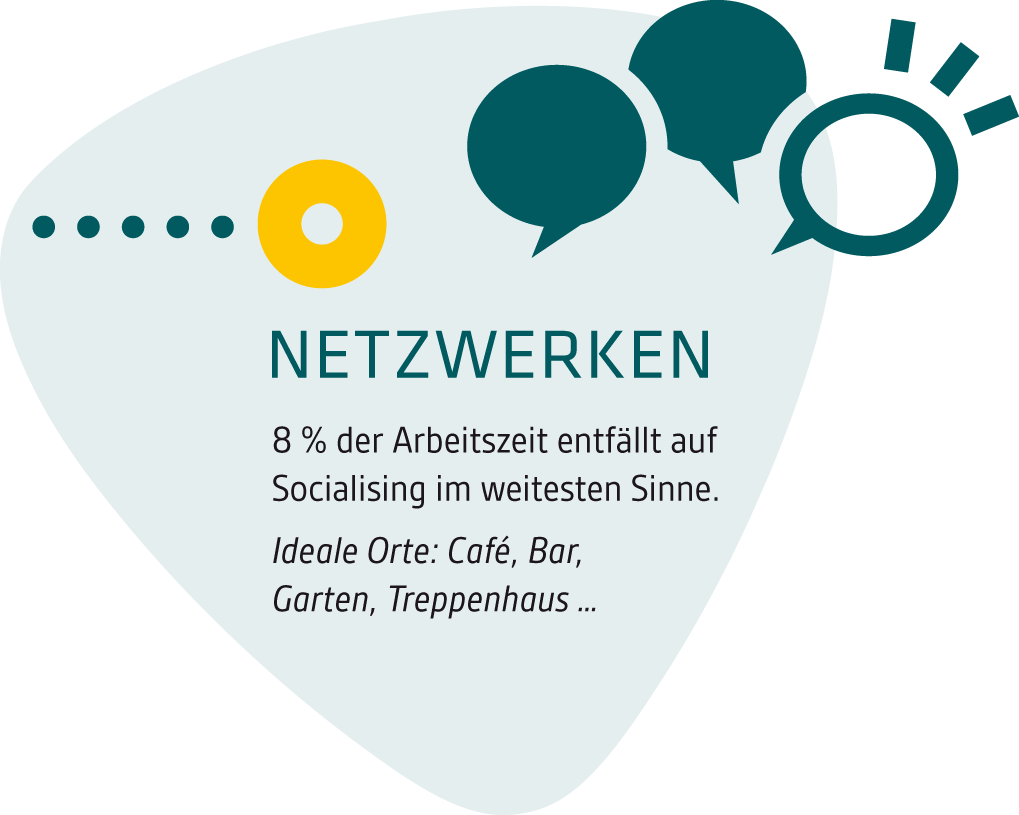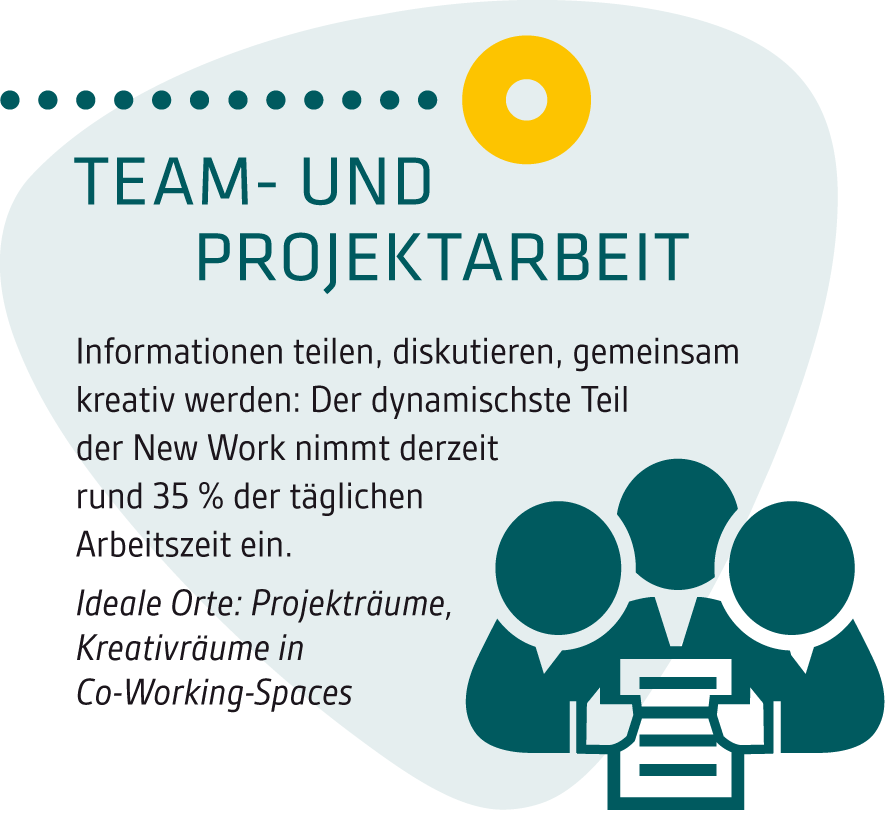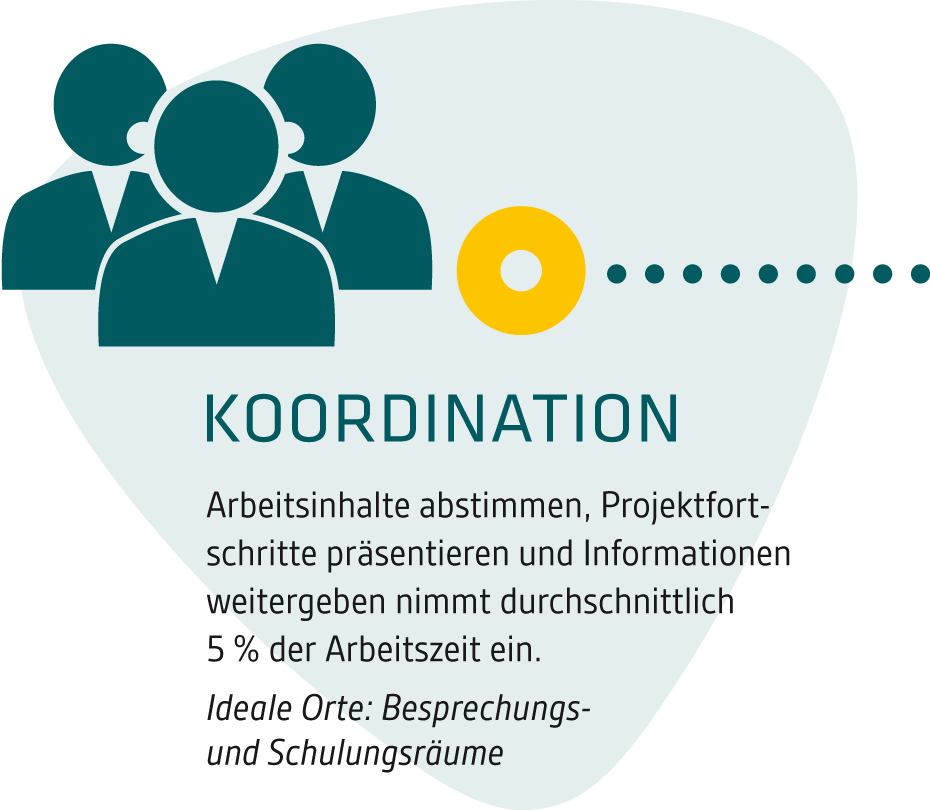
Collaboration
A knowledge worker’s central activities
The most characteristic aspects of a modern office worker’s daily activities are communication and cooperation with others. This is documented by the IBA/bso studies. Beside this focused individual work continues to play an important role.
An average working day

Focused individual work still accounts for a large proportion of office workers’ daily activities. For this purpose, employees need workplaces where they won’t be disturbed and don’t feel they are being monitored. If such work areas are lacking, employees’ personal sense of well-being suffers. Productivity decreases as well, according to studies conducted in the USA. Companies that neglected to provide areas for focused work were demonstrably less productive. This also applies when employees prefer to use the workstation in their home for their focus work. Even then, suitable workplaces for individual work are still needed, because most office days are filled with changing activities.

Teamwork and project work is traditionally done within departments or in fixed project groups. A new feature of New Work is the fact that cooperation is increasingly taking place across departmental and company boundaries. This development will be accelerated by the huge complexity of the related tasks, high investment costs for new technologies, and a shortage of specialized workers.


Networking is done not only at special events but frequently also through informal contacts — inside companies as well as outside them. This is important for developing a sense of community and stabilizing it from time to time. In addition, communication that is not related to specific work tasks is also a source of interesting ideas and fresh momentum.

Coordination is an important aspect of office work. It’s part of project work, and it also creates bridges between different areas of activity. In many cases, the various types of coordination work take up much more than the 5% of time that is required on average. Interactive communication tools can help to organize the various types of coordination efficiently.

The distribution of office work presented above presents the average values. This data is not suitable for developing office design concepts. Office design developers should always consider the specific characteristics of the company, the department and the employees’ activities.



